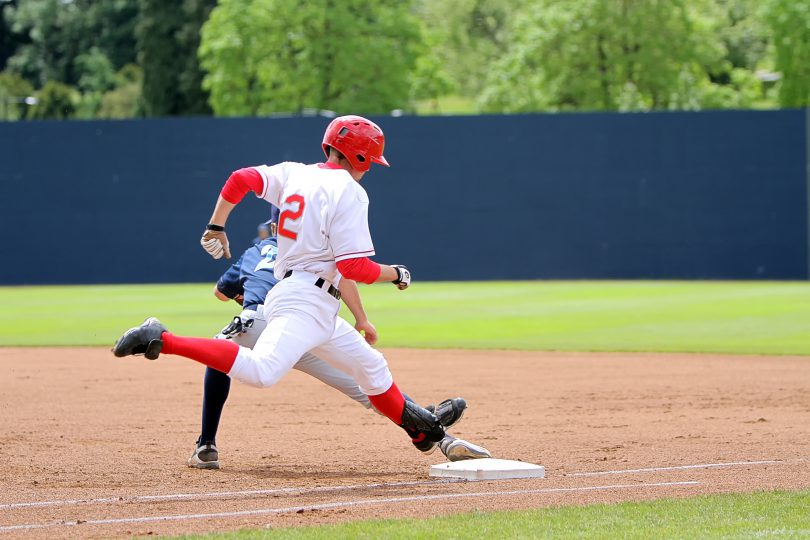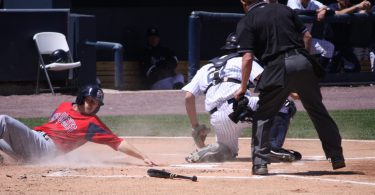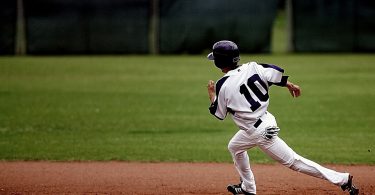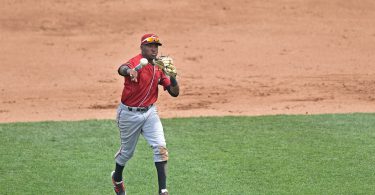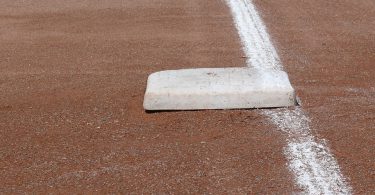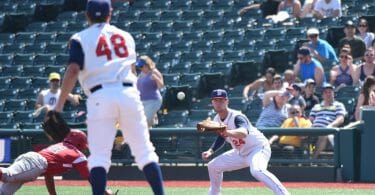The Situation:
It’s the top of the 3rd inning and the game is still tied at zero. The offense is threatening and they have runners at 1st and 3rd with one out. There is a 2-0 count on the batter, who is sitting dead red, waiting on his pitch.
The Play:
The pitcher comes set and deals. The batter gets his fastball, but is just a bit early with his timing. He hits the top half of the ball and still manages to hit it hard. Unfortunately, it’s a one-hop bullet right at the third baseman, who fields it waist high without having to move his feet.
The Outcome:
The runner at third freezes initially, before returning to the third base bag. The third baseman pays no mind the runner at third, instead taking a shuffle and starting what eventually turns into a textbook 5-4-3 double play to end the inning. The inning is over and the tie preserved.
What Went Wrong:
Can you figure out the glaring mistake? If not, that’s probably because the mistake may not have made any difference in the outcome, but we’ll never know. In high school, it may seem that there is no such thing as a routine double play. In college, this changes. With a double play in order, runners at third base during a 1st and 3rd situation with one out almost always run on a routine down angle batted ball. Running brings about several positive outcomes that staying at third does not. In this scenario, the runner at 3rd makes the mistake of not running at down angle contact. Why is this a mistake when he would easily be thrown out at the plate? Let’s look at the possible outcomes if the runner at third base runs on down angle:
- The runner is thrown out at the plate. Outcome: The inning continues and the offense still has a chance to score.
- The defense attempts to turn the double play but can’t. Outcome: The run scores and the inning continues.
- The defense successfully turns the double play and the inning is over. This is the worst possible outcome, but there is nothing the runner could have done.
Now let’s look at the possible outcomes if the runner stays at third like he did:
- The defense attempts to turn the double play but can’t. Outcome: The offense doesn’t score from the defensive mistake and has runners where they started. Not as good an outcome as scoring.
- The defense successfully turns the double play and the inning is over. This is the worst possible outcome. The runner at 3rd is left to wonder if it might have been different had he run.
In this Think the Game, the offensive outcomes aren’t good. However, running on down angle increases your chances for a successful outcome to happen. If the 3rd baseman does his job and has prepared well for this situation, he should turn the double play here whether the runner at third base runs or not. In college, that’s a high percentage play to end the inning.
However, the runner at third heading home may act as a distraction or maybe the third baseman would try to make the play at home based on instinct. As unlikely as this may be, it’s worth finding out. As an offense in a lose-lose situation, you’ll take the chance that the distraction works and the inning gets extended.
There are always exceptions and you should always check with your coach about your team’s base running strategy in this situation, but if you are thinking the game on a college level, you are running to prevent the double play in this situation.

